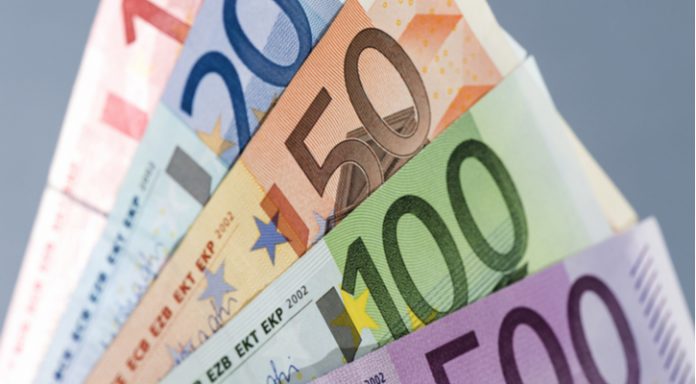- Pound (GBP) steadies after two days of gains
- UK grocery inflation cools to 9.7%
- Euro (EUR) struggles after German industrial productions falls
- Eurozone PPI data is due
The Pound Euro (GBP/EUR) exchange rate is holding steady after two days of losses. The pair fell -0.11% in the previous session, settling on Friday at €1.1517 and trading in a range between €1.1509 – €1.1564. At 09:00 UTC, GBP/EUR trades +0.01% at €1.1518.
The pound is holding steady as investors weigh up inflation and house price data.
According to market researcher Kantar, UK grocery inflation has fallen out of double digits for the first time since July 2022, which could provide some relief for consumers as they head towards the key Christmas shopping.
Grocery inflation eased to 9.7% in the four weeks to October 29th. This was down from 11% in the previous month.
The falling trajectory of food inflation will be watched closely by consumers and the Bank of England as it considers whether to raise interest rates again before the end of the year.
In the November meeting, the central bank hinted that it was done with hiking rates but suggested that rates may remain elevated across 2024.
Meanwhile, the Halifax house price index ticked higher by 1.1% in October compared to the previous month, ending a six-month falling streak.
However, Halifax says that the increase in price reflects the shortage of properties rather than a broad-based improvement in the housing sector. Compared to a year earlier, house prices in October were 3.2% lower. This was after a 4.5% annual decline in September.
While house prices don’t have a direct impact on the economy, falling house prices and a weak housing sector often have a negative impact on consumer confidence, which affects how much shoppers are willing to spend.
Separately, the euro is struggling to make gains after German industrial output fell much more than expected.
German industrial production tumbled 1.2% month on month in September, down from a 0.2% decline in August and well below the 0.1% decline that analysts had pencilled in.
The German economy is dependent on industrial production to achieve reasonable economic growth, and these figures highlight the struggles that the eurozone’s largest economy is having in the third quarter and enters the final quarter of the year.
. Looking ahead, eurozone wholesale inflation as measured by PPI is expected to fall 12.5% annually in October after falling 11.5% in September. A weak PPI can point to a deteriorating demand environment, which could raise concerns over a recession in the second half of the year.





